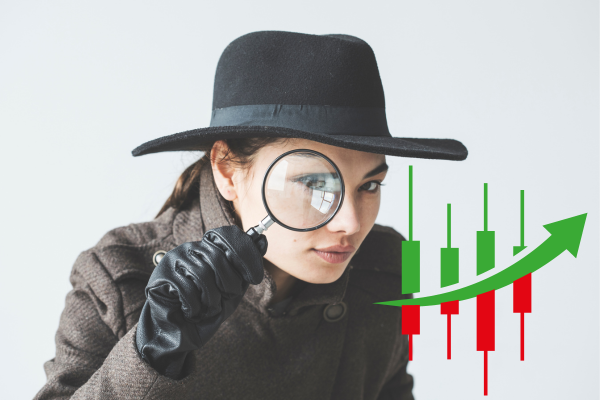
Forex trading, short for foreign exchange trading, involves buying and selling currencies with the goal of making a profit. It’s the largest and most liquid financial market in the world, where over $6 trillion is traded daily. For beginners, forex trading might seem intimidating, but with the right knowledge and approach, it can be a profitable and exciting endeavor. This guide will take you through the basics of how to start forex trading, step by step.
1. Understanding Forex Trading
Forex trading involves trading currency pairs. Each pair consists of two currencies: the base currency (the first one in the pair) and the quote currency (the second one). When you trade a pair, you’re essentially buying the base currency and selling the quote currency.
For example, in the EUR/USD pair:
- EUR is the base currency (Euro).
- USD is the quote currency (US Dollar).
If the EUR/USD pair rises, it means the Euro is strengthening against the Dollar. If it falls, the Euro is weakening against the Dollar. Your goal in forex trading is to predict whether one currency will strengthen or weaken against another and place trades accordingly.
2. Basic Forex Terminology
Before diving into trading, it’s essential to understand some basic forex terms:
- Pip: A pip (percentage in point) is the smallest price movement in the forex market. Most currency pairs are quoted to four decimal places, and a pip is one unit of that fourth decimal.
- Spread: The difference between the buy (ask) and sell (bid) price of a currency pair. This is how brokers make money.
- Leverage: Leverage allows you to control a large position with a small amount of capital. For example, if you have a leverage of 1:100, it means that for every $1 in your account, you can control $100 in the market. While leverage can amplify profits, it also increases the risk of losses.
- Margin: The amount of money required to open a position. It’s a percentage of the total trade size.
- Lot Size: A lot is the standardized unit of currency in forex trading. A standard lot is 100,000 units of the base currency, while mini and micro lots are 10,000 and 1,000 units, respectively.
3. Choosing a Reliable Forex Broker
Your choice of broker is crucial when starting forex trading. A good broker will provide you with a secure platform, low spreads, a variety of currency pairs, and quality customer support. Here’s what to look for in a broker:
- Regulation: Ensure that the broker is regulated by a reputable authority such as the Financial Conduct Authority (FCA), National Futures Association (NFA), or Australian Securities and Investments Commission (ASIC). This ensures that your money is protected.
- Spreads and Commissions: Look for brokers that offer low spreads and reasonable commission rates. High spreads can eat into your profits.
- Trading Platform: The trading platform is where you’ll execute trades. It should be user-friendly and offer tools like charts, technical analysis, and risk management features. MetaTrader 4 (MT4) and MetaTrader 5 (MT5) are popular choices.
- Leverage and Margin Requirements: Different brokers offer different leverage and margin requirements. Make sure you choose one that aligns with your risk tolerance.
- Customer Support: Responsive and helpful customer support is essential, especially for beginners who might need assistance navigating the platform or resolving issues.

4. Opening a Forex Trading Account
Once you’ve chosen a broker, the next step is to open a trading account. Most brokers offer various types of accounts, such as:
- Demo Account: This is a great way to practice forex trading without risking real money. It allows you to trade in a simulated market with virtual funds.
- Standard Account: This type of account is for more experienced traders and usually comes with higher minimum deposits and access to larger lot sizes.
- Mini or Micro Account: Ideal for beginners, these accounts allow you to trade with smaller amounts of money, lowering your risk.
To open an account, you’ll need to provide some personal information, including proof of identity, proof of residence, and financial information. Once your account is verified, you can fund it and start trading.
5. Learn Forex Trading Strategies
Forex trading isn’t just about buying and selling at random. Successful traders rely on various strategies to make informed decisions. Here are a few basic strategies to get you started:
- Scalping: This is a short-term strategy where traders aim to make small profits by taking advantage of minute price movements. Scalpers often enter and exit trades within minutes or seconds.
- Day Trading: Day traders hold positions throughout the day but close all trades before the market closes. They typically aim for slightly larger price movements than scalpers.
- Swing Trading: Swing traders hold positions for several days or even weeks, aiming to profit from significant price swings.
- Position Trading: This is a long-term strategy where traders hold positions for weeks, months, or even years, based on macroeconomic trends and fundamental analysis.

6. Develop a Risk Management Plan
Managing risk is one of the most critical aspects of forex trading. Even the most successful traders experience losses, so it’s important to have a plan in place to minimize risks. Here are some key risk management techniques:
- Use Stop-Loss Orders: A stop-loss order automatically closes a position once it reaches a certain price level, limiting your potential losses.
- Position Sizing: Don’t risk too much of your account on a single trade. A common rule is to risk no more than 1-2% of your total account balance on any given trade.
- Diversify Your Trades: Avoid putting all your capital into one currency pair. Instead, diversify across different pairs to spread your risk.
7. Technical vs. Fundamental Analysis
There are two main types of analysis used in forex trading:
- Technical Analysis: This involves analyzing price charts, patterns, and technical indicators like moving averages, Bollinger Bands, and the Relative Strength Index (RSI). Technical traders use historical price data to predict future movements.
- Fundamental Analysis: This type of analysis focuses on economic indicators, geopolitical events, and central bank policies to determine the long-term value of a currency. Key indicators include interest rates, employment data, and inflation rates.
Most successful traders use a combination of both technical and fundamental analysis to make informed decisions.
8. Start with a Demo Account
If you’re new to forex trading, it’s advisable to start with a demo account. This allows you to practice trading in a risk-free environment with virtual funds. You can familiarize yourself with the trading platform, test different strategies, and gain confidence before transitioning to a live account.
9. Stay Informed and Keep Learning
The forex market is constantly changing, influenced by economic events, political decisions, and market sentiment. Staying informed about these factors is crucial to your success as a trader. Follow forex news, subscribe to market analysis reports, and participate in online forex communities to keep up with the latest trends and strategies.
Additionally, continuous learning is key. Many brokers offer educational resources such as webinars, tutorials, and eBooks. Take advantage of these resources to deepen your understanding of the market and improve your trading skills.
10. Start Small and Grow Gradually
Once you’re ready to trade with real money, start with small amounts. Don’t rush into trading large lots right away, as this can lead to significant losses. As you gain experience and confidence, you can gradually increase your trade size and explore more complex strategies.
Conclusion
Forex trading offers great opportunities, but it’s not without risks. As a beginner, it’s important to start slow, educate yourself, and practice good risk management. Choose a reliable broker, use a demo account to gain experience, and develop a solid trading strategy. With patience and dedication, you can succeed in the exciting world of forex trading.
Remember, consistent learning and discipline are the keys to becoming a successful forex trader. Happy trading!
